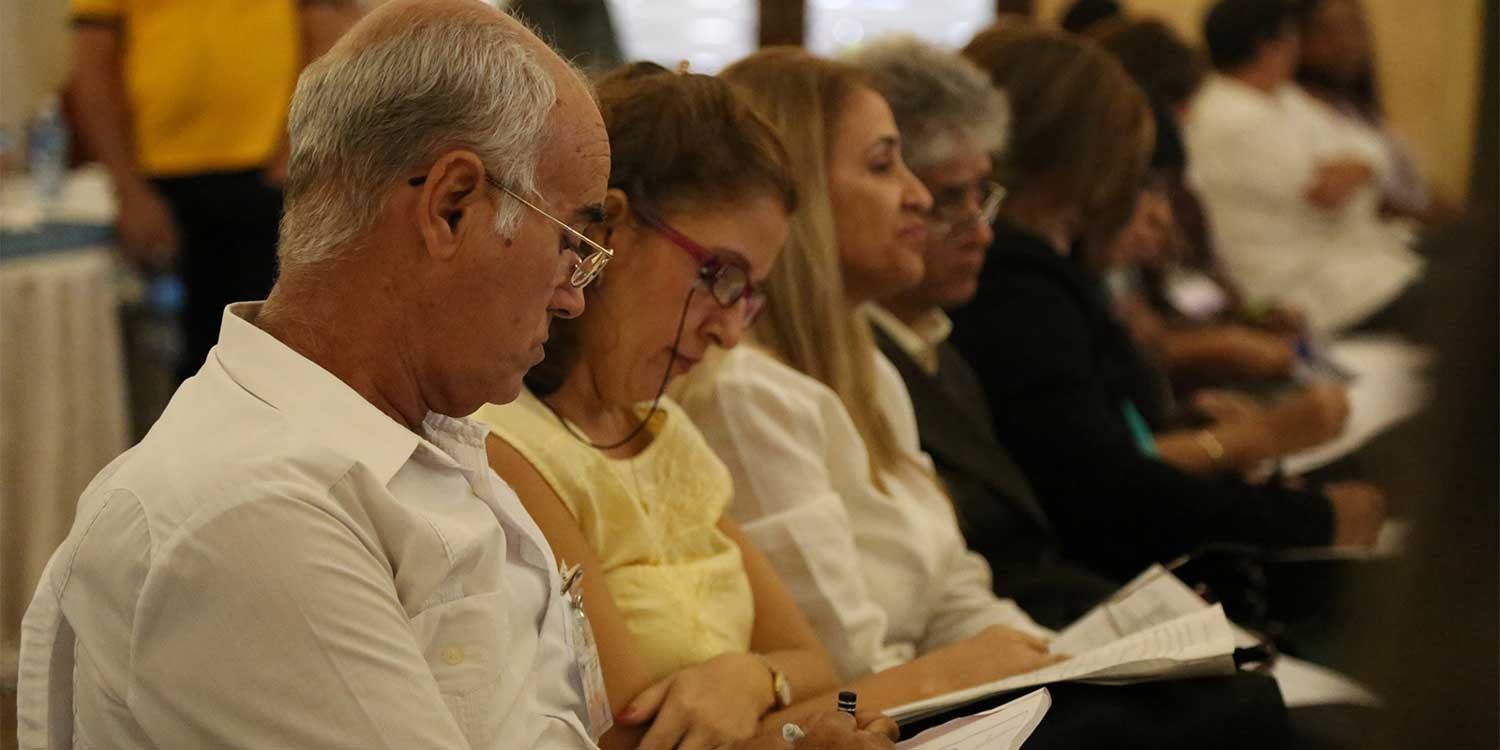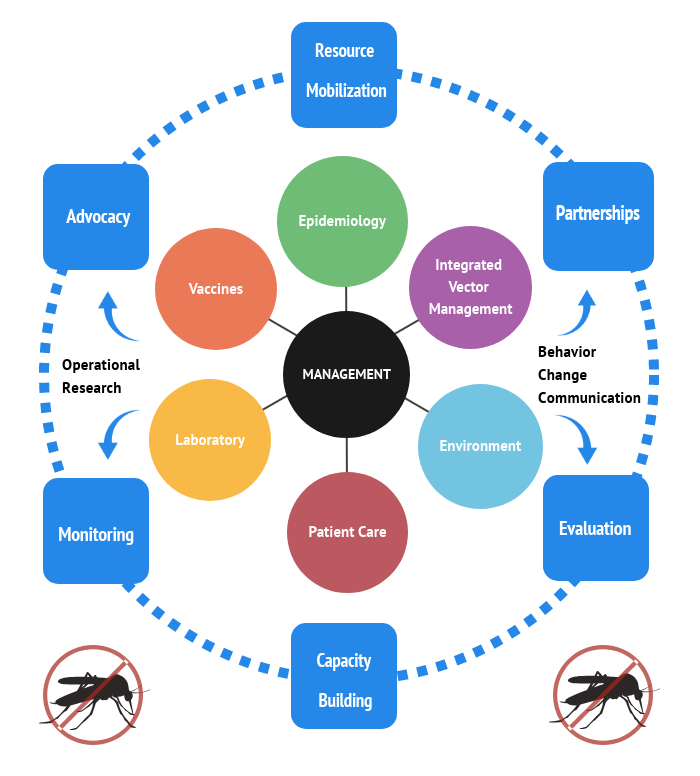The International Dengue Task Force was created through the Resolution CD44-R9, of the PAHO Directing Council (2003) and supports the efforts made by the countries to face Dengue, one of the biggest health issues in our society. The International Dengue Task Force is incorporated to the work in the countries, to modify the current practices and put underway the new strategy of integrated management for dengue prevention and control. This new strategy is horizontal, intersectoral, inter-programmatic and seeking to change those behaviors that make up the conditioning risk factors for dengue.
Background
In 2001, the PAHO Directing Council adopted Resolution CD43.R4, a political declaration responding to the alarming situation involving dengue. This resolution constitutes a frame of reference for the new generation of programs for the prevention and control of this disease, which share the paradigm of health promotion with emphasis on coordinated activities between the government, the health sector, the economic and social sectors, nongovernmental organizations, and any and all associations-be they traditional or new-capable of helping to strengthen the national prevention and control programs. The activities generated should have as their objective promoting behavioral change, both individual and collective, in all that is related to a better environmental arrangement in relation to preventing dengue.
Rationale for the Formation of the Task Force
By responding to the situation at hand, in the current context of change and following new orientations regarding the ways and means necessary to apply for PAHO technical cooperation, an integrated disease management model was proposed that includes a new form of technical cooperation, with the creation of the International Dengue Task Force (GT-Dengue, from its acronym in Spanish). The GT-Dengue International Task Force is a group of experts whose starting point is to conduct an integrated analysis of the current regional situation, who will join the workforce in the countries to work together to modify existing practices and implement the new Integrated Strategy for Dengue Prevention and Control (EGI-Dengue, also from its acronym in Spanish). This new strategy is horizontal, intersectoral, interprogrammatic, seeking to change those behaviors that make up the conditioning risk factors for dengue. GT-Dengue International, as a means of technical cooperation to deal with dengue, was adopted at the annual meeting of the Directing Council on 26 September 2003 by the PAHO Member Countries, through Resolution CD44.R9.
The Team
GT-Dengue International is made up of a professional team with experience in each area mentioned as a component in the Strategy of Integrated Management, namely:
- Epidemiological Surveillance: These experts have excellent knowledge of the principles and recent advances in epidemiology, surveillance, and biostatistics, with demonstrated capacity in the use of epidemiological techniques and of procedures to analyze the magnitude of communicable diseases that affect populational health, determining those factors that influence the magnitude of these interventions. They have prior experience in the management of programs for dengue prevention and control.
- Laboratory Procedures: These experts have experience in different diagnostic techniques for dengue, in addition to laboratory management, sampling, and other related activities.
- Case Management (particularly when treating the most serious cases): These medical professionals are versed in early detection of dengue cases and serious case management of dengue hemorrhagic fever/dengue shock syndrome and have the capacity to transmit this knowledge to other health workers.
- Mass Communications: These professionals are well versed in new communication strategies that have an impact on behavior, which is a vital point for helping the health authorities reach the community, which is the primary unit of prevention in households. They are in harmony with the New Generation of Programs for Dengue Prevention and Control promoted by PAHO. They are capable of conducting training workshops for other communicators who can then replicate their actions.
- Vector-Control Activities: Basically entomologists, these vector-control experts know how to run programs and are versed in integrated vector-control and environmental management activities; but they are also sensitive to the incorporation of the community in these activities.


